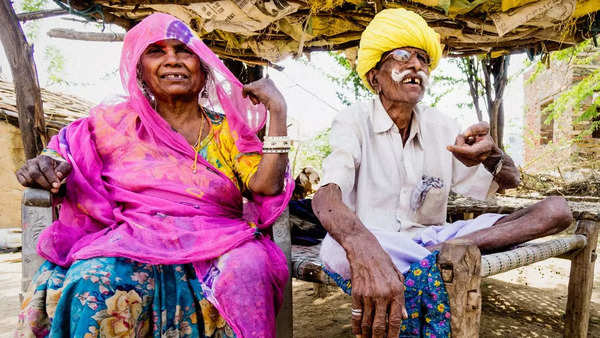The community kitchen, where all the meals in Chandranki are cooked is a central feature of the village. With a common cooking area that is utilized daily, the kitchen was established to provide a sense of togetherness and support. The villagers pay a monthly fee ₹2,000 per person which is a modest amount for the two hearty meals which are provided. These meals are prepared by hired cooks who are paid ₹11,000 per month. The kitchen offers a variety of traditional Gujarati dishes, ensuring both nutritional balance and variety.

Representative image
Poonambhai Patel, the village sarpanch, played a significant role in this initiative. After spending 20 years in New York, he returned to Chandanki, leaving his home in Ahmedabad. His efforts have been instrumental in maintaining the community spirit. As he puts it, “Our Chandanki is a village that lives for each other”.
The meals are served in a solar-powered air-conditioned hall, which has become a gathering place for the villagers. This hall is not just a dining area but also a place where people share their joys and sorrows. It has helped in creating a strong bond among the villagers, making them feel less isolated. The idea of a community kitchen was initially met with skepticism. However, as the benefits became evident, more villagers embraced it. The kitchen has not only provided a solution to loneliness but also ensured that the elderly do not have to worry about cooking their meals. This has given them more time to rest and engage in other activities.
The community kitchen has also attracted attention from outside the village. People from nearby areas visit Chandanki to see this unique setup. It has become a model for other villages facing similar issues. The success of Chandanki’s community kitchen lies in its simplicity and the strong sense of community it fosters.
The village has also seen a positive impact on the health of its residents. With regular, nutritious meals, the overall health of the villagers has improved. The shared meals have also encouraged social interactions, reducing the feeling of isolation among the elderly.
Chandanki’s community kitchen is a proof of the power of collective effort. It shows how a simple idea can bring about significant positive change. The village continues to thrive, with its residents enjoying the benefits of this unique tradition. The story of Chandanki is a all about the importance of community and the impact it can have on the lives of individuals.
5 Things that happen to the body when a meal is skipped
